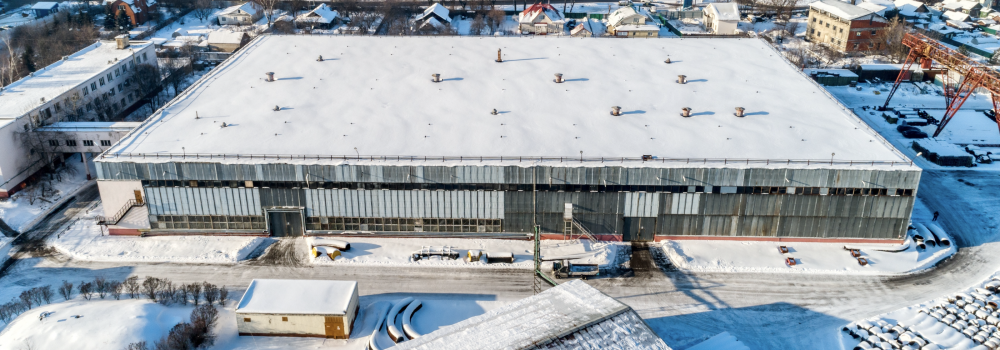
Flat roofs are not flat. They have a very low slope so the water can drain. Since they are so low slope they hold snow and water much longer than a steep roof. The Flat roof material is made up of different watertight materials. Steep sloped roofs are made of shingles that overlap like fish scales. This allows water to easily slide off of them. A flat roof is designed to hold standing water for a limited period. Flat roofs are commonly found on commercial buildings.
3 types of Flat Roofs
- Built-up roof
- Modified Bitumen roof
- Membrane roof
Build-up roof – Build-up roofs are mainly used on commercial roofs due to their weight and thickness. They allow excellent protection against UV rays, water, and inclement weather. It’s easy to remove when resurfacing and making repairs. Gravel in built-up roofs makes it resistant to normal foot traffic. It cost very little to maintain and is low maintenance during its lifetime. It is not flexible in cold temperatures, making it susceptible to damage. It can be difficult to find the source of a leak and may require dismantling the roof.
Modified Bitumen roof – Modified Bitumen was designed in the ’60s as a lightweight alternative to the build-up roof. This is an asphalt-based material with a mineral top coating. It comes in rolls making it easier to install, saving labor and less room for error during the installation process. Provides better durability than a built-up roof.
Membrane roofs – Membrane roofs are made of sheets of rubber and other synthetics. They can be ballasted or chemically adhered to create a layer of protection. There are two main types of single-ply membrane commercial roofing. The first is TPO and the second is EPDM. The difference between the two is how they are installed, energy efficiencies and how they are installed.
